I tried to implement a simple sample using element-ui.
There are two 'switches' () each one has the value for active state: 2 and 1. The switches' values are displayed in <p>{{sw1}}</p> and <p>{{sw2}}<>/p> like this.
Here is the component source 'Sample.vue':
<template>
<div class="wrapper">
<el-switch v-model="sw1" active-value=2 inactive-value=0></el-switch>
<p>{{sw1}}</p>
<el-switch v-model="sw2" active-value=1 inactive-value=0></el-switch>
<p>{{sw2}}</p>
<p>{{value}}</p>
</div>
</template>
<script>
export default {
data () {
return {
sw1: 0,
sw2: 0
}
},
computed: {
value: () => {
return Number(this.sw1) + Number(this.sw2)
}
}
}
</script>
It was supposed that <p>{{value}}</p> shows the computed ( sw1 + sw2 ) value, however it always shows NaN in spite of <p>{{sw1}}</p> and <p>{{sw2}}<>/p> were changed correctly when the status of switches are changed.
Why does computed: always return NaN?
